*Disclaimer
All rights belong to Wizards of the Coast
to see the full article, click here: 
IN THE STRIXHAVEN, PART 1
Posted in Making Magic on March 29, 2021
Welcome to the first week of Strixhaven: School of Mages previews. I'm going to introduce you to the Strixhaven Vision Design team, start telling the story of the set's design, and show off some cool new cards. I hope you get a lot out of it! That said, on with the story.
Before I start telling the tale of Strixhaven's design, you can meet the members of the Exploratory and Vision Design teams by clicking below.
-
CLICK HERE TO MEET THE VISION DESIGN TEAM
-







TIME FOR SCHOOL
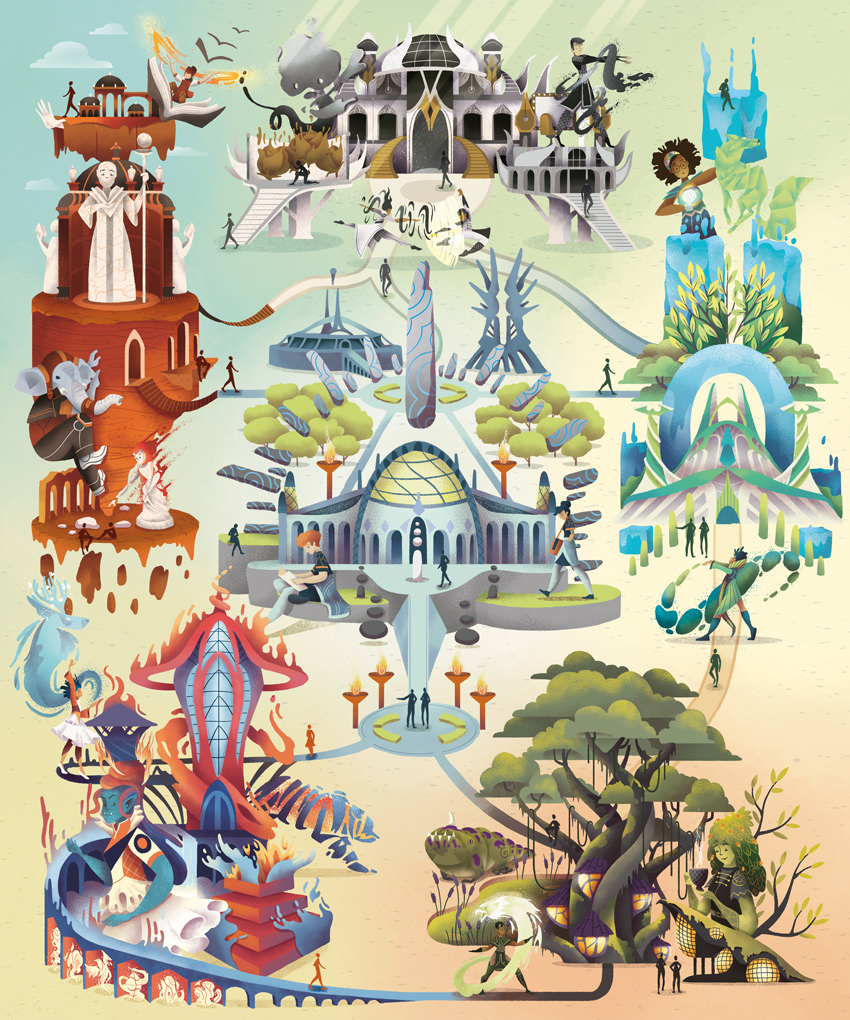
The Strixhaven story begins during the design of original Innistrad. We needed to find a way to capture Werewolves, and design team member Tom LaPille suggested we borrow some card technology from our other trading card game, Duel Masters. That was the introduction of double-faced cards. At first, we used them for transformation. You play side A and then you can turn it to side B. Maybe some of the time, you can turn it back to side A. But it didn't take long once we had double-faced cards to realize that transforming wasn't the only design possible. We figured out modal technology (casting either side like a split card) pretty quickly. We didn't want to do both in Innistrad as we felt that would cause confusion, so I shelved MDFCs for a future time.
From time to time, I thought about if MDFCs would make sense in a set I was working on, but usually I found something else that worked better. I came to realize that their debut was probably going to come in a set where they played a central role. So, when Aaron asked me during one of our offsites if there was a mechanic that I wanted to build a set around, I said yes. Okay, what kind of world would work with it?
I'm a huge fan of top-down sets based on genres, and Jenna Helland (of the Creative team) and I had been talking about the magical school genre. It was clearly fantasy adjacent and seemed full of tropes that we could make a lot of fun cards out of. Aaron had added that it might be a good place to do a set based on spells (aka instants and sorceries) as those are the only card types we haven't focused a set on. One of the biggest problems with doing a spell-focused set, especially in Limited, is that you tend not to have enough spells in your deck. MDFCs could solve that. You could do spells on one side and a creature on the other. That way, you could get enough creatures to play while still having access to plenty of spells.
But wait, there were more ideas stewing! Another idea I had on my list of things to build a set around concerned doing an enemy color set. The last one we'd done was Eventide back in 2008, and the last time we'd done one with traditional gold multicolored cards was Apocalypse back in 2001. I had twice tried to make an enemy color set and failed since then. Dragons of Tarkir was originally going to be in enemy colors, but it was pointed out to me that the proper way to draft a wedge set was to start with enemy colors, and that meant it wouldn't be enough of a shift from Khans of Tarkir (the whole block design was built around the middle set drafting with the large sets on each end), forcing us to shift to an ally color set. Unstable was also meant to be an enemy color faction set, but the one faction I had to deliver on, the Steamfloggers, just didn't make sense in red-white or blue-red, again forcing me to shift to ally colors.
The magical school genre lent itself well to factions, which would let us do an enemy color set and made sense with a focus on instants and sorceries and played nicely with MDFCs. I pitched this idea as a total package, and everyone was on board with it. From interacting with the audience, I knew there was a desire for an enemy color faction set. I knew there was a desire for an instant- and sorcery-focused set. I had total faith in MDFCs as a mechanic. And a top-down magical school seemed like awesome trope space, not just because of the magical part, but because it let us do a lot of school tropes, and almost everyone has been to school at some point, so it was playing in very resonant space. It was the set we'd locked down that day that I was the most excited about. I had total confidence about every aspect of it. It should be smooth sailing. (You'd think I'd learn to stop saying that out loud.)
THE BOULDER RETURNS
In 1998, Unglued premiered. It was successful out of the gate, and I was assigned to make Unglued 2: The Obligatory Sequel. That project got shelved close to completion. In it, I had a wacky idea for a type of card that had two cards on it, and you could cast either one, which I called split cards. It had been inspired by the success of the card B.F.M., which was one card so big that it went onto two different cards. I thought doing the opposite would be cool. I would later pitch split cards to Bill Rose for inclusion in Invasion. At the start of the set's development, Bill, Richard Garfield, and I were literally the only ones in the building who wanted to do them. Henry Stern, the set's lead developer, tried to kill them day one of development. The brand team asked us to remove them. The editing team asked us to remove them. Customer service asked us to remove them. Bill and I were tireless, though, and managed to get them to print, where they were a huge hit with the audience.
In 2011, original Innistrad came out. As I explained above, one of our goals with the set was to make Werewolves as cool as possible (Magic had only had three up until then, and all were pretty lackluster), and team member Tom LaPille had suggested using double-faced technology that Duel Masters, another trading card game Wizards makes, was using. The double-faced cards were very controversial inside R&D. Erik Lauer, the set's lead designer, explained (in a recent podcast) that the development team only got eight drafts in because so many people were reluctant to play with the set with the double-faced cards in it. In the end, despite significant internal resistance, the double-faced cards stayed and were received well by the audience.
Modal double-faced cards were clearly the marriage of split cards and double-faced cards, both of which had overcome significant reluctance within R&D to make it to print with much player fanfare. Surely, this time, I wouldn't have to put up a fight to keep them in the set. I mean, we'd proven that both split cards and double-faced cards were beloved by the audience. Combining them couldn't be an issue, right? Sadly, no. Some of R&D didn't feel they belonged and campaigned pretty hard against their inclusion in the set. This caused some rumblings in upper management ("I hear there's some people unhappy with this mechanic"), so Aaron suggested I put together a design mini team to create some MDFC designs. He felt if people could see concrete cards, it would help win the mechanic some favor in the department.
The design mini team had a few meetings and created a whole bunch of very cool designs. The more we worked with it, the more we realized what a potent and varied mechanic MDFCs were. So much so that I realized we might be able to use them to sell three sets instead of just one. I'd been trying to create more mechanical cohesion between sets of the same "year," and I liked the idea of using MDFCs as a bridge between Zendikar Rising, Kaldheim, and Strixhaven. Aaron was correct in that letting the Powers That Be see actual designs helped calm their worries about the new mechanic. It also went well enough that I was able to sell Aaron on my three-set MDFC plan. There was one small hiccup that I hadn't foreseen, however. As we started working with them, it became clear that the Standard environment only wanted so many (and remember, we knew that Innistrad was coming out later in the years with transforming double-faced cards), which meant that all the sets had to cut back on their numbers. That wasn't a big deal for Zendikar Rising or Kaldheim, but we'd planned to build Strixhaven around the MDFCs. We now had to build an instant- and sorcery-focused set without MDFCs existing in large number to solve our problem. More on this next week.
SCHOOL'S IN SESSION
There was a different problem we had to solve first. We wanted to build an enemy color faction set. How could we do that in a way that didn't just feel like a Ravnica set? The enemy color guilds were so memorable. How could we carve out our own space that didn't just feel like a retread? The key to solving this was to create factions that neither felt like nor played like their associated guilds, which required leaning into the resonance of our top-down tropes.
While there is cool stuff in both the magical side and school side of the magical school genre, for the purposes of factioning, I was much more interested in the school side. You see, a very common execution of the magical school trope is to have the students take classes in magical subjects (potions, charms, incantations, etc.). I was much more interested in students studying normal academic subjects but using magic to study them. For example, imagine a history class where you can summon the spirit of the historical person you're studying and listen to them talk about their life. That meant that we wanted to divide our factions by college. Strixhaven was the university, and each faction would be a college at the university with a different field of study.
Another thing that I thought was important was to approach the factions using a different method than we had with the guilds. The guilds were all about the overlap of the two colors. It examined what the two colors had in common. What if this time we did the opposite? What if we focused on the conflict between the two colors? What if the faction was based not on agreement but disagreement? I felt this worked perfectly with our university flavor. I remember college as a place where I hung out with people who were studying and arguing over similar subjects. Nothing seemed more college-like than intellectual disputes. Each faction could represent a subject area, and the colors would represent the internal conflict of the people studying it. That would feel very different than the guilds.
We started by making a list of every college subject we could think of. (All vision designs start with a whiteboard moment of making lists.) We then looked at our five color pairs and started seeing where things lined up. The first one that jumped out at us was black-green. Its conflict is that of life versus death, the two most primal forces in nature. It examines the ecosystem of the world and judges what one's role in it is supposed to be. This could be our science college, obviously focusing on biology. Everyone in the college loves science, but there's a big divide on what the driving force is. What ultimately dictates the direction of nature—life or death?
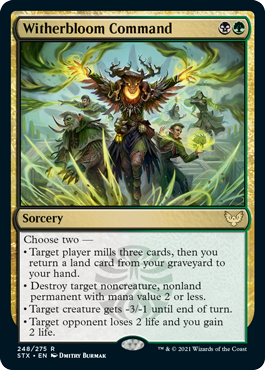
Next up was blue-red. Its conflict was intellect versus emotion. It focused on how we perceive the world and how impacts us. It cares about how we can harness our minds and our emotions to connect with one another. We realized that this was the perfect fit for our art college. Painting, sculpture, dance, music, theater—every form of self-expression is taught here. The core conflict of this college is about what the purpose of art is. Is it supposed to make people think things or make people feel things? Is it supposed to be carefully thought out or raw and spontaneous?
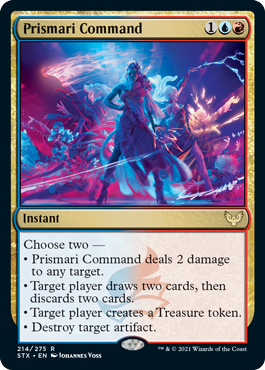
This was followed by red-white. Its conflict is chaos versus order. This conflict is very system oriented. White and red are also the two colors that care most about people and their relationships. White is driven by community, while red is driven by personal connections. This led us to realize that this could be our history college encompassing psychology, anthropology, and archeology. It looks at how people interact with one another and how that dictates society. The core conflict of this college concerns people (aka humanoid creatures) as a whole driven by the structures that pull them together (laws, religions, jobs, schools, etc.) or by their familiar bonds (their relationships with their family and their friends). Is a society dictated by its rules or by its passions?
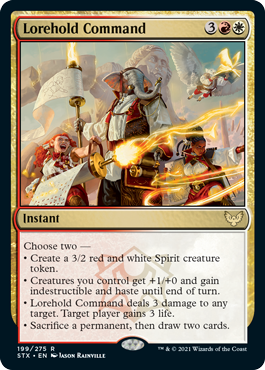
We then talked about green-blue. Its conflict is nature versus nurture. Is life about discovering what is or about creating what could be? This color pair took a little time to wrap our heads around, but what got us to it being the math college was an article I'd read years earlier. One of the great debates of math seeks to answer what exactly math is. Is it a natural force that's always existed and humans just discovered it, or was it a creation of humanity? I loved the idea that everyone in the college loved math, but the students argued about its origins and its larger role in the Multiverse.
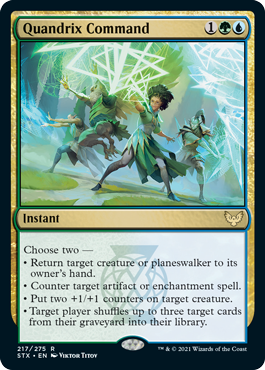
The final color pair we did was white-black. We looked at everything we'd done and realized that there was a big hole, academically speaking, and that was language, literature, and communications, things revolving around words. White-black's conflict is the good of the group versus the good of the individual. Is your purpose in life to make decisions that help the most people possible or the decisions that best help you personally? As we thought about how this conflict applied to literature and other forms of communication, we found an interesting conflict emerge. What's the point of communication? Is it to help people or is it to further your own agenda? Literature can be selfless or selfish depending on the supposed role it plays in society assumed by others. This could be the college of people who love words, but the core conflict is about how that power should be used. Is it to better society or better yourself?
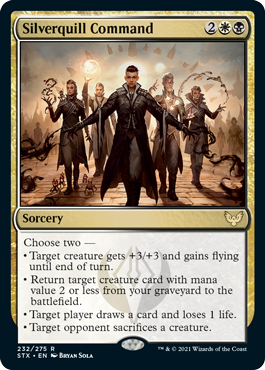
We had the basic ideas for what the factions represented, but now we had to figure out how to make them play differently. I'll get to that in part two.
One final cool thing I'll mention is that we liked the idea of each college having a different type of magic. As we looked at how we split them up, we realized there was a straightforward divide. Silverquill, the white-black college of communications, uses word-based magic. You speak your spells. Prismari, the blue-red art college, uses gesture-based magic. Your movement creates the spells. Witherbloom, the black-green science college, uses component-based magic. Your spells require a combination of natural ingredients. Lorehold, the red-white history college, uses written magic. Your spells come from scrolls or books, usually ones that have existed for some amount of time. Quandrix, the green-blue math college, uses formulas. Your spells are preconfigured using math.
HISTORY LESSON
Before I sign off for today, I have a few preview cards to show you. First up is part a cycle that I knew we had to do if we did an enemy color set. Magic has done a cycle of monocolored Dragons. It's done ally color Dragons. It's done Dragons in shards. It's done wedge Dragons. All of these even have legendary versions. However, there has never been a cycle of enemy color Dragons. (There have been a bunch of blue-red ones, though.) That is, until now. When I first talked with Doug Beyer about making this world, I asked for one thing. There has to be a cycle of mythic rare enemy color legendary Dragons. Doug did not disappoint. It turns out each of the colleges was founded by and named after a Dragon. As today is Lorehold day, I thought I'd show you the founder of Lorehold College—Velomachus Lorehold.
-
CLICK HERE TO MEET VELOMACHUS LOREHOLD
-
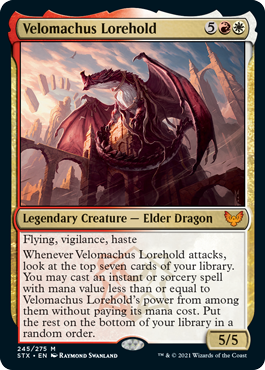
Faction sets love cycles. Next up is a legendary student cycle. Each college has a student that gets some spotlight on numerous cards, and each gets an uncommon signpost legendary creature card. Lorehold's student is especially endearing. This card will give you a little sneak peek into what red-white's draft strategy is. Hint: It's not attacking aggressively with lots of little creatures.
-
CLICK HERE TO MEET QUINTORIUS, FIELD HISTORIAN
-
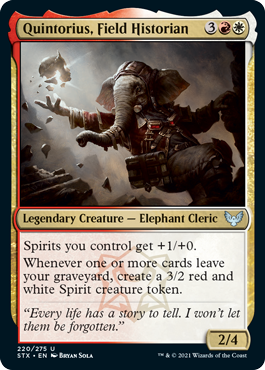
Another cycle is a common creature cycle using the magecraft mechanic (more on that next week). These cards are designed to be build-arounds in Limited. All five use hybrid mana so that they're viable in more decks. If you want to learn more about any of the Strixhaven mechanics, check out the mechanics article.
-
CLICK HERE TO SEE LOREHOLD PLEDGEMAGE
-
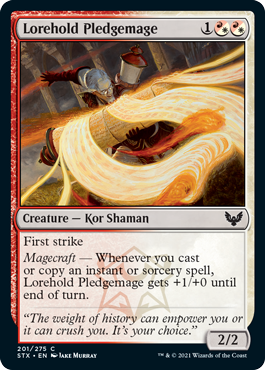
Next up is a cycle of enemy color scry lands flavored as the campuses of each college.
-
CLICK HERE TO SEE LOREHOLD CAMPUS
-
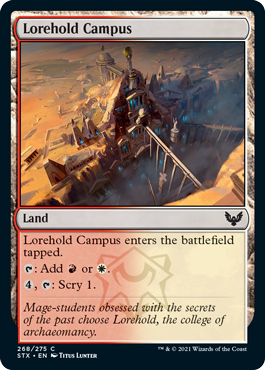
My final preview is a Lesson card that works with the new learn mechanic (more on those in future weeks). It also shows off the fact that each college has its own mascot creature token. You'll get to see Lorehold's if you click below. Also, this card should give you some hints as to what red-white's mechanical identity is all about.
-
CLICK HERE TO SEE ILLUMINATE HISTORY
-
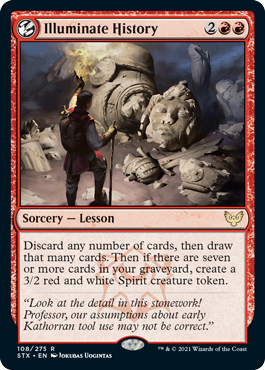
That's all the previews I have for today.
I hope you enjoyed the first part of the story of Strixhaven's design. As always, I'm eager to hear your feedback on today's article or on any part of Strixhaven itself. You can email me or contact me through any of my social media accounts (Twitter, Tumblr, Instagram, and TikTok).
Join me next week for part two of Strixhaven's design story.
Until then, may you have fun learning about everything Strixhaven has to offer.
#819: CHAMPIONS OF KAMIGAWA WITH BRIAN TINSMAN
#819: CHAMPIONS OF KAMIGAWA WITH BRIAN TINSMAN
30:41
I sit down with former Magic designer Brian Tinsman to talk about the design of Champions of Kamigawa.
#820: LEGENDARY ARTIFACTS, PART 1
#820: LEGENDARY ARTIFACTS, PART 1
31:31
In this podcast, I share card-by-card stories about various legendary artifacts.
- Episode 818 From the Vault
- Episode 817 Invasion with Bill Rose
- Episode 816 Innistrad with Erik Lauer



